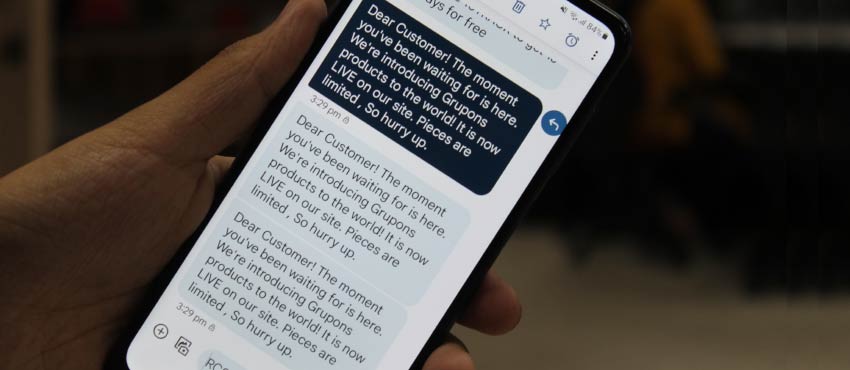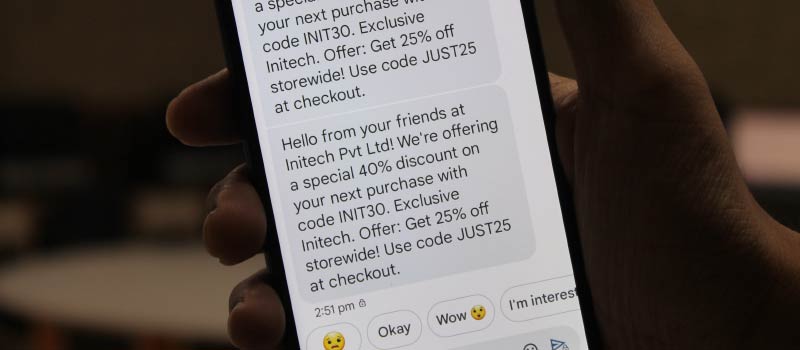The process of integrating a Bulk SMS gateway with your CRM or marketing automation tools typically involves the following steps:

-
Selecting a Bulk SMS Gateway Provider:
Start by researching and selecting a reputable Bulk SMS gateway provider. There are many providers available, so it's essential to choose one that aligns with your specific requirements in terms of pricing, features, coverage, and reliability.
-
Understanding the API Documentation:
Once you have access to the API documentation, familiarize yourself with the methods and parameters available. The documentation will guide you on how to format the requests, authenticate, and handle responses from the API.
-
Native Integration:
Some CRM and marketing automation tools offer built-in integration options with popular Bulk SMS gateways. Check if your platform already supports direct integration, as this can save you time and effort.
-
Custom Development:
If there is no native integration available, you may need to develop custom code to interact with the Bulk SMS gateway API. This may involve writing scripts or plugins that handle the API requests and responses.
-
Adding SMS Functionality to your CRM or Automation Tools:
Now it's time to integrate the SMS functionality into your CRM or marketing automation tools. Depending on the platform you're using, this can be done in several ways:
-
Third-Party Integrations:
Alternatively, you can explore third-party integration tools or middleware that act as bridges between your CRM/marketing automation platform and the SMS gateway.
-
Testing the Integration:
Before deploying the SMS functionality in a live environment, thoroughly test the integration in a staging or testing environment. Ensure that the SMS messages are being sent correctly and that any errors or issues are appropriately handled.
-
Opt-In and Compliance:
When using Bulk SMS for marketing purposes, ensure that you have obtained proper consent (opt-in) from recipients to receive SMS messages. Additionally, adhere to local and international SMS marketing regulations to avoid legal complications.
-
Getting API Access:
Most Bulk SMS gateway providers offer APIs (Application Programming Interfaces) that allow you to connect their services with your CRM or marketing automation platform. APIs are sets of protocols and tools that enable different software applications to communicate with each other. You'll need to sign up with the SMS gateway provider to get access to their API documentation and credentials.
-
Monitoring and Analytics:
After the integration is live, monitor the performance of your SMS campaigns. Most Bulk SMS gateways provide analytics and reporting features to track the delivery status, open rates, click-through rates, and other relevant metrics.
Best Practices for Using a Bulk SMS Gateway Effectively
Using a Bulk SMS gateway effectively requires careful planning, attention to detail, and adherence to best practices. Bulk SMS can be a powerful tool for businesses to reach their customers, promote products or services, and disseminate important information. Here are the key steps and best practices for using a Bulk SMS gateway effectively:

-
Define Your Objectives:
Clearly outline your goals and objectives for the SMS campaign. Are you trying to promote a new product, provide timely information, or engage with customers? Understanding your objectives will help you create targeted and relevant messages.
-
Obtain Permission:
Ensure that you have obtained proper consent from recipients before sending them SMS messages. Unsolicited messages can lead to legal issues and damage your brand reputation. Implement an opt-in system, where users voluntarily subscribe to receive SMS updates from you.
-
Segment Your Audience:
Divide your contact list into relevant segments based on demographics, preferences, and behavior. Sending personalized and targeted messages increases the chances of engagement and conversion.
-
Time Your Messages Wisely:
Timing is crucial in SMS marketing. Send messages during appropriate hours when your audience is likely to be available and attentive. Avoid sending messages too early in the morning or too late at night.
-
Personalization:
Whenever possible, personalize your messages with the recipient's name or other relevant information. Personalization enhances engagement and creates a more personalized experience for the user.
-
Include an Opt-out Option:
Always provide recipients with a simple and clear opt-out mechanism. This is not only a legal requirement in many countries but also ensures that you respect your customers' preferences and privacy.
-
Craft Concise and Compelling Messages:
SMS has a character limit (typically 160 characters). Craft concise and to-the-point messages that deliver value and clearly convey the purpose. Include a clear call-to-action (CTA) that directs recipients on what to do next.
-
Monitor and Analyze Results:
Track the performance of your SMS campaigns. Measure metrics such as delivery rates, open rates, click-through rates, and conversions. Use these insights to refine your approach and improve future campaigns.
-
Be Mindful of Frequency:
Avoid bombarding recipients with too many messages, as it can lead to unsubscribes or irritate your audience. Find the right balance between staying in touch and not overwhelming them.
-
Test Your Campaign:
Before launching a full-scale campaign, run A/B tests on a smaller segment of your audience to gauge the effectiveness of different messages, timings, and strategies.
-
Comply with Regulations:
Different countries have varying regulations regarding SMS marketing. Familiarize yourself with local laws, including data protection and privacy regulations, to ensure compliance.
-
Integrate with Other Channels:
Consider integrating your SMS marketing efforts with other marketing channels, such as email and social media, to create a unified and consistent customer experience.
-
Avoid URL Shorteners:
Refrain from using URL shorteners in SMS messages as they may be flagged as spam by mobile carriers, reducing deliverability.
-
Maintain a Clean Database:
Regularly update and clean your contact list to remove inactive or invalid numbers. This will improve the efficiency of your campaigns and reduce costs.
-
Monitor Your Budget:
Bulk SMS can become expensive if not managed properly. Set a budget and keep track of your spending to ensure you are getting a good return on investment (ROI).
By following these best practices, you can effectively leverage a Bulk SMS gateway to reach your audience, improve customer engagement, and drive business growth. Remember that SMS marketing should be used responsibly and respectfully to maintain a positive brand image and foster strong customer relationships.
| Date: 📅 18/08/2023